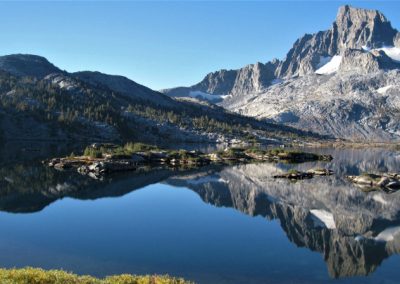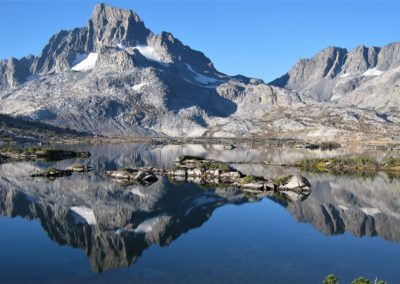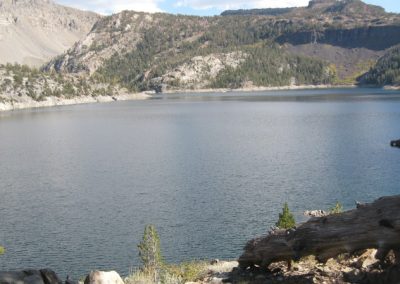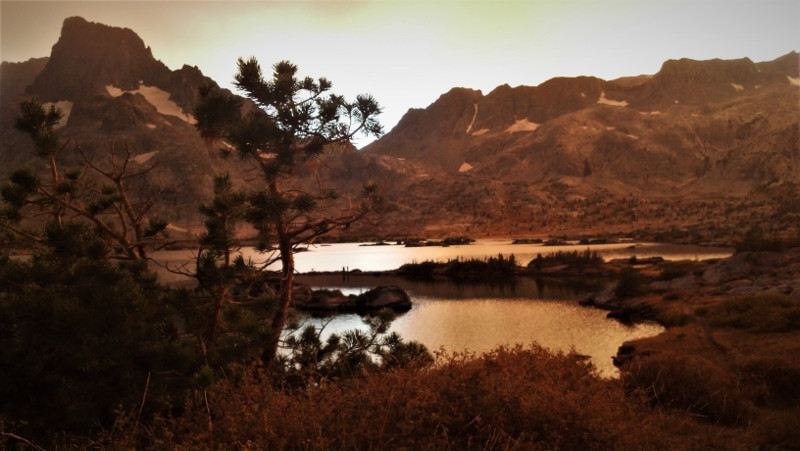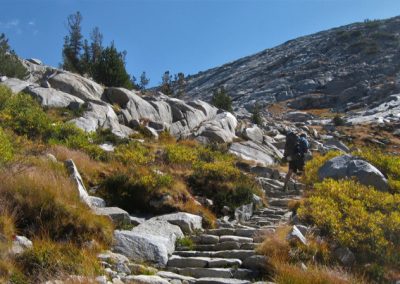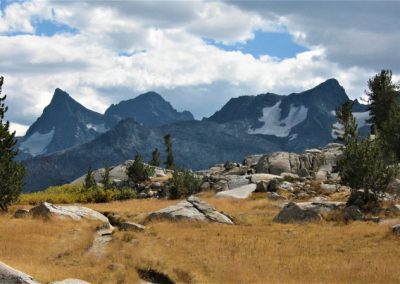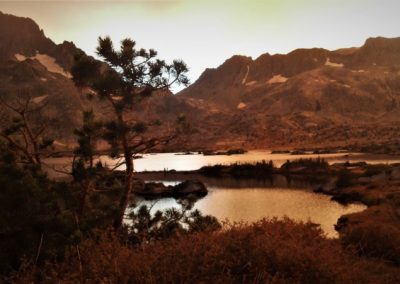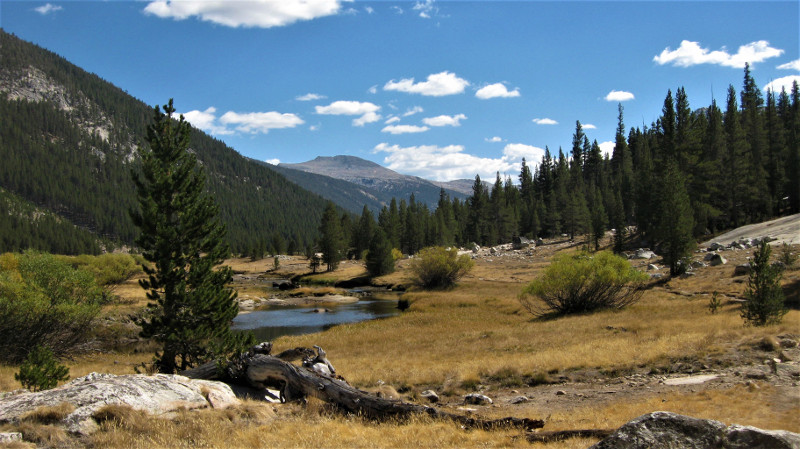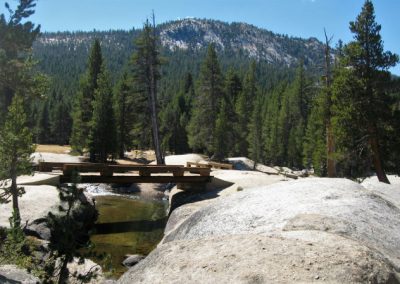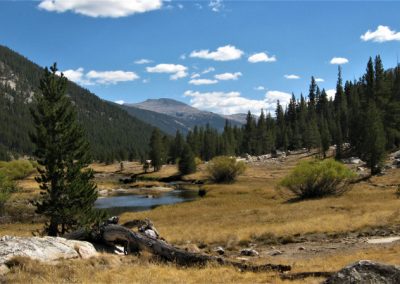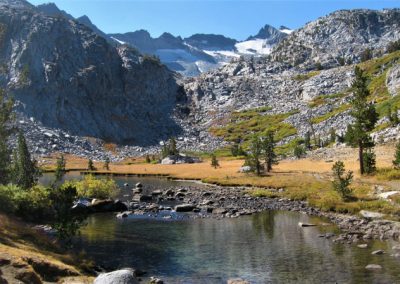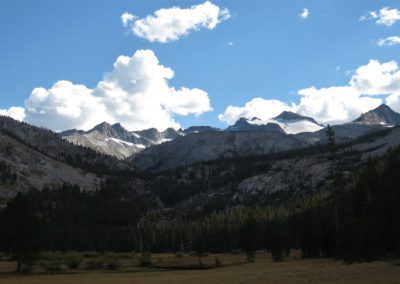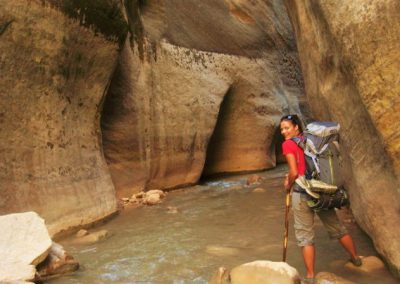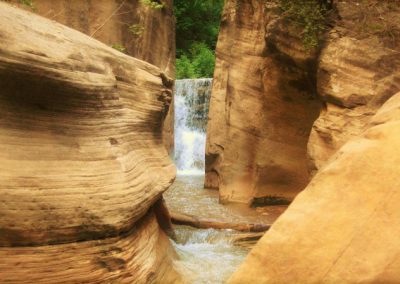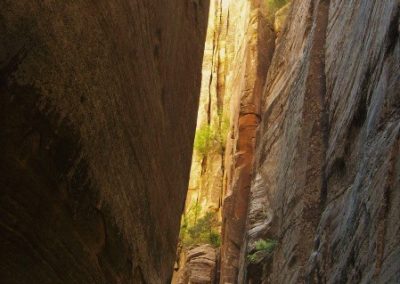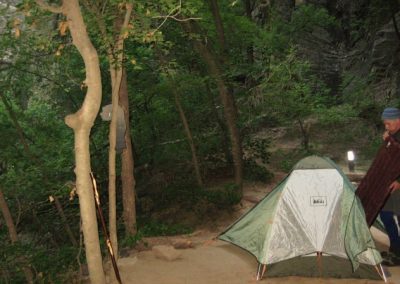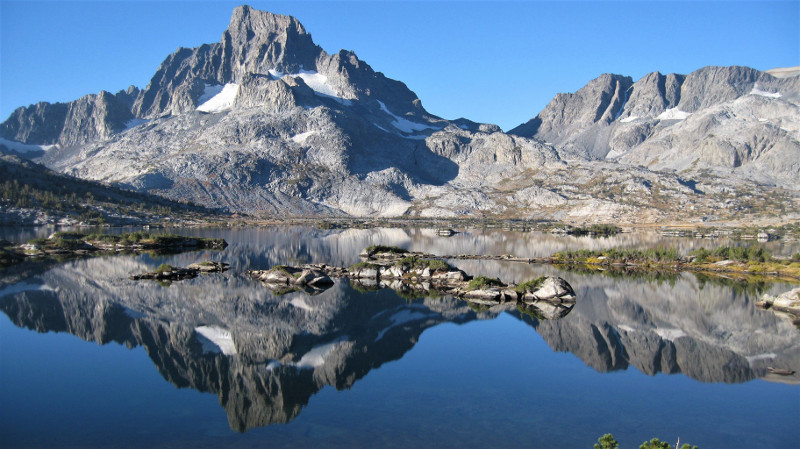
Yosemite: Day Four
Day Four
During his morning stroll to our bear can, Carl discovered a ripped open bag of half-eaten tea satchels, something that was sweet and pink but was so gnawed up it was impossible to tell what it had once been, and ten packs of Starbucks Via coffee less than a hundred feet from our tent.
We set off to find the owners. Mostly because I was mad and I wanted to know which idiot hadn’t stored their food properly. I know that sounds mean, but by not following the rules they put everyone in camp, and the poor bear, in danger. Yosemite has a stringent bear policy. If this bear became accustomed to people food, he wasn’t going to be relocated; he was going to be killed.
We don’t find anyone missing food. Instead, we meet a couple who’s foodstuffs had been in a Kevlar Bear Sack tied to a little Charlie Brown Christmas Special tree about fifty feet from their tent. The bag was more or less intact if you overlook the giant teeth holes, but everything inside was a crushed mess. They hadn’t even heard him.
This, they believed, was partly due to the sleeping drugs they had taken the night before, and partly due to the hairs between a bears foot pads that make them stealthy little buggers.
I suddenly had a new chapter for my book.
“Chapter 3: If a Bear Rips into Your Food Stuffs, Does it Make a Sound?”
I am neither a scientist nor a genius, but looking at the teeth marks in their food bag, I questioned the “bear-proof-ness” of the Kevlar Bear Sack. It appeared to be the equivalent of sticking a sandwich in a Ziploc baggy and tying it to a twig and then insisting it was raccoon proof. I mean technically, I guess, the food was still in the bag, mostly, but it was most definitely no longer edible, which in my mind kind of defeated the purpose. Meh, what did I know? Maybe they had been using it wrong; they seemed groggy and a little drunk.
We asked if they needed food, but oddly enough, they insisted they had all they needed. They also told us the food we had found, had likely belonged to an Asian man they had met the night before. He was out of water, lying “overturned turtle” on his backpack, calling for help. I had a sneaking suspicion I knew who this was. They filtered him water as he told them the story of how he had gotten separated from his friends. Unfortunately, the way they had divided the gear, one was carrying all of the water filtration equipment, one had the tent, one had most of the food, etc. The man had told them he had been “leaving” things on the trail to help lighten the load. They had already found his cologne. Carl and I laughed and told them we had his food and sandals. As funny as it was, all of us hoped the four of them made it out alive.
Back at our tent, we rummaged through the garbage we had collected from around the tent. Most of it ended up in our trash, but the Starbucks Via coffees were completely unharmed! I guess bears don’t like Starbucks coffee, which worked out brilliantly for us because we did but we were too cheap to buy any! After rinsing the slobber off of them, they were as good as new!
We ate breakfast next to the sparkling blue waters of the lake. Near the edge of the lake, a “Pacific Crest Trail” sign was just visible.
“One day, I want to hike the Pacific Crest Trail.” Carl mused as we ate our oats and happily sipped our Starbucks.
Sounded like a pretty good adventure to me, though I highly doubted it would ever happen.
We hadn’t been on the trail for more than an hour when the couple with the Kevlar Bear Sack came passed.
Carl was happy to see they were packing out because earlier the man had not been very coherent and Carl was afraid he was suffering from altitude sickness. I had thought it was the sleeping pills.
“Weren’t you going to stay two nights?” Carl asked. “Or did you decide to head back a day early because the bear mauled your food?”
The man thought about this.
“No. We were going to spend two nights, but the bear ate our food. So we’re going to head back today.”
‘Wait, isn’t that what I just said?’ Carl looked at me quizzically.
“Book Chapter 4: Are You Drunk or Just Too High: Knowing the Symptoms of Altitude Sickness.”
Gem Lake was perfectly tranquil, and we had the entire thing to ourselves. And at Gem Lake, I found two of my absolute favorite things – silence and stillness. Finding ourselves a premium campsite on a large piece of exposed rock that hung out a hundred feet above the lake, we sat down and drank it all in.
It’s amazing how well you can sleep when there’s no one yelling at bears…

